- Home
- Bill Bryson
The Life and Times of the Thunderbolt Kid Page 2
The Life and Times of the Thunderbolt Kid Read online
Page 2
But then he had to be there. It was part of his fate, too. I am not exactly suggesting that Bobby Thomson hit that home run because my father was there or implying that he wouldn’t have hit it if my father had not been there. All I am saying is that my father was there and Bobby Thomson was there and the home run was hit and these things couldn’t have been otherwise.
My father stayed on for the World Series, in which the Yankees beat the Giants fairly easily in six games—there was only so much excitement the world could muster, or take, in a single autumn, I guess—then returned to his usual quiet life in Des Moines. A little over a month later, on a cold, snowy day in early December, his wife went into Mercy Hospital and with very little fuss gave birth to a boy: their third child, second son, first superhero. They named him William, after his father. They would call him Billy until he was old enough to ask them not to.
APART FROM BASEBALL’S greatest home run and the birth of the Thunderbolt Kid, 1951 was not a hugely eventful year in America. Harry Truman was president, but would shortly make way for Dwight D. Eisenhower. The war in Korea was in full swing and not going well. Julius and Ethel Rosenberg had just been convicted of spying for the Soviet Union, but would sit in prison for two years more before being taken to the electric chair. In Topeka, Kansas, a mild-mannered black man named Oliver Brown sued the local school board for requiring his daughter to travel twenty-one blocks to an all-black school when a perfectly good white one was just seven blocks away. The case, immortalized as Brown v. the Board of Education, would be one of the most far-reaching in modern American history, but wouldn’t become known outside jurisprudence circles for another three years when it reached the Supreme Court.
America in 1951 had a population of 150 million, slightly more than half as much as today, no interstate highways, and only about a quarter as many cars. Men wore hats and ties almost everywhere. Women prepared every meal more or less from scratch. Milk came in bottles. The mailman came on foot. Total government spending was $50 billion a year, compared with $2.5 trillion now.
I Love Lucy made its television debut on October 15, and Roy Rogers, the singing cowboy, followed in December. In Oak Ridge, Tennessee, that autumn police seized a youth on suspicion of possessing narcotics when he was found with some suspicious brown powder, but he was released when it was shown that it was a new product called instant coffee. Also new, or not quite yet invented, were ballpoint pens, fast foods, TV dinners, electric can openers, shopping malls, freeways, supermarkets, suburban sprawl, domestic air-conditioning, power steering, automatic transmissions, contact lenses, credit cards, tape recorders, garbage disposals, dishwashers, long-playing records, portable record players, baseball teams west of St. Louis, and the hydrogen bomb. Microwave ovens were available, but weighed seven hundred pounds. Jet travel, Velcro, transistor radios, and computers smaller than a small building were all still some years off.
Nuclear war was much on people’s minds. In New York on Wednesday, December 5, the streets became eerily empty for seven minutes as the city underwent “the biggest air raid drill of the atomic age,” according to Life magazine, when a thousand sirens blared and people scrambled (well, actually walked jovially, pausing upon request to pose for photographs) to designated shelters, which meant essentially the inside of any reasonably solid building. Life’s photos showed Santa Claus happily leading a group of children out of Macy’s, half-lathered men and their barbers trooping out of barber shops, and curvy models from a swimwear shoot shivering and feigning good-natured dismay as they emerged from their studio, happy in the knowledge that a picture in Life would do their careers no harm at all. Only restaurant patrons were excused from taking part in the exercise on the grounds that New Yorkers sent from a restaurant without paying were unlikely to be seen again.
Closer to home, in the biggest raid of its type ever undertaken in Des Moines, police arrested nine women for prostitution at the old Cargill Hotel at Seventh and Grand downtown. It was quite an operation. Eighty officers stormed the building just after midnight, but the hotel’s resident ladies were nowhere to be found. Only by taking exacting measurements were the police able to discover, after six hours of searching, a cavity behind an upstairs wall. There they found nine shivering, mostly naked women. All were arrested for prostitution and fined $1,000 each. I can’t help wondering if the police would have persevered quite so diligently if it had been naked men they were looking for.
The eighth of December 1951 marked the tenth anniversary of America’s entry into the Second World War, and the tenth anniversary plus one day of the Japanese attack on Pearl Harbor. In central Iowa, it was a cold day with light snow and a high temperature of twenty-eight, but with the swollen clouds of a blizzard approaching from the west. Des Moines, a city of two hundred thousand people, gained ten new citizens that day—seven boys and three girls—and lost just two to death.
Christmas was in the air. Prosperity was evident everywhere in Christmas ads that year. Cartons of cigarettes bearing sprigs of holly and other seasonal decorations were very popular, as were electrical items of every type. Gadgets were much in vogue. My father that year bought my mother a hand-operated ice crusher, for creating shaved ice for cocktails, which converted perfectly good ice cubes into a small amount of cool water after twenty minutes of vigorous cranking. It was never used beyond New Year’s Eve 1951, but it did grace a corner of the kitchen counter until well into the 1970s.
Tucked among the smiling ads and happy features were hints of deeper anxieties, however. Reader’s Digest that autumn was asking “Who Owns Your Child’s Mind?” (Teachers with Communist sympathies apparently.) Polio was so rife that even House Beautiful ran an article on how to reduce risks for one’s children. Among its tips (nearly all ineffective) were to keep food covered, avoid sitting in cold water or wet bathing suits, get plenty of rest, and, above all, be wary of “admitting new people to the family circle.”
Harper’s magazine in December struck a somber economic note with an article by Nancy B. Mavity on an unsettling new phenomenon, the two-income family, in which husband and wife both went out to work to pay for a more ambitious lifestyle. Mavity’s worry was not how women would cope with the demands of employment on top of child-rearing and housework, but rather what this would do to the man’s traditional standing as breadwinner. “I’d be ashamed to let my wife work,” one man told Mavity tartly, and it was clear from her tone that Mavity expected most readers to agree. Remarkably, until the war many women in America had been unable to work whether they wanted to or not. Up until Pearl Harbor, half of the forty-eight states had laws making it illegal to employ a married woman.
In this respect my father was commendably—I would even say enthusiastically—liberal, for there was nothing about my mother’s earning capacity that didn’t gladden his heart. She, too, worked for The Des Moines Register, as the home furnishings editor, in which capacity she provided calm reassurance to two generations of homemakers who were anxious to know whether the time had come for paisley in the bedroom, whether they should have square sofa cushions or round, even whether their house itself passed muster. “The one-story ranch house is here to stay,” she assured her readers, to presumed cries of relief in the western suburbs, in her last piece before disappearing to have me.
Because they both worked we were better off than most people of our socioeconomic background (which in Des Moines in the 1950s was most people). We—which is to say, my parents, my brother, Michael, my sister, Mary Elizabeth (or Betty), and I—had a bigger house on a larger lot than most of my parents’ colleagues. It was a white clapboard house with black shutters and a big screened porch atop a shady hill on the best side of town.
My sister and brother were considerably older than I—my sister by five years, my brother by nine—and so were effectively adults from my perspective. They were big enough to be seldom around for most of my childhood. For the first few years of my life, I shared a small bedroom with my brother. We got along fine. My brother had con
stant colds and allergies, and owned at least four hundred cotton handkerchiefs, which he devotedly filled with great honks and then pushed into any convenient resting place—under the mattress, between sofa cushions, behind the curtains. When I was nine he left for college and a life as a journalist in New York City, never to return permanently, and I had the room to myself after that. But I was still finding his handkerchiefs when I was in high school.
THE ONLY DOWNSIDE of my mother’s working was that it put a little pressure on her with regard to running the home and particularly with regard to dinner, which frankly was not her strong suit anyway. My mother always ran late and was dangerously forgetful into the bargain. You soon learned to stand aside about ten to six every evening, for it was then that she would fly in the back door, throw something in the oven, and disappear into some other quarter of the house to embark on the thousand other household tasks that greeted her each evening. In consequence she nearly always forgot about dinner until a point slightly beyond way too late. As a rule you knew it was time to eat when you could hear potatoes exploding in the oven.
We didn’t call it the kitchen in our house. We called it the Burns Unit.
“It’s a bit burned,” my mother would say apologetically at every meal, presenting you with a piece of meat that looked like something—a much-loved pet perhaps—salvaged from a tragic house fire. “But I think I scraped off most of the burned part,” she would add, overlooking that this included every bit of it that had once been flesh.
Happily, all this suited my father. His palate only responded to two tastes—burned and ice cream—so everything suited him so long as it was sufficiently dark and not too startlingly flavorful. Theirs truly was a marriage made in heaven, for no one could burn food like my mother or eat it like my dad.
As part of her job, my mother bought stacks of housekeeping magazines—House Beautiful, House & Garden, Better Homes and Gardens, Good Housekeeping—and I read these with a certain avidity, partly because they were always lying around and in our house all idle moments were spent reading something, and partly because they depicted lives so absorbingly at variance with our own. The housewives in my mother’s magazines were so collected, so organized, so calmly on top of things, and their food was perfect—their lives were perfect. They dressed up to take their food out of the oven! There were no black circles on the ceiling above their stoves, no mutating goo climbing over the sides of their forgotten saucepans. Children didn’t have to be ordered to stand back every time they opened their oven doors. And their foods—baked Alaska, lobster Newburg, chicken cacciatore—why, these were dishes we didn’t even dream of, much less encounter, in Iowa.
Like most people in Iowa in the 1950s, we were more cautious eaters in our house. *1 On the rare occasions when we were presented with food with which we were not comfortable or familiar—on planes or trains or when invited to a meal cooked by someone who was not herself from Iowa—we tended to tilt it up carefully with a knife and examine it from every angle as if determining whether it might need to be defused. Once on a trip to San Francisco my father was taken by friends to a Chinese restaurant and he described it to us afterward in the somber tones of someone recounting a near-death experience.
“And they eat it with sticks, you know,” he added knowledgeably.
“Goodness!” said my mother.
“I would rather have gas gangrene than go through that again,” my father added grimly.
In our house we didn’t eat
• pasta, rice, cream cheese, sour cream, garlic, mayonnaise, onions, corned beef, pastrami, salami, or foreign food of any type, except French toast
• bread that wasn’t white and at least 65 percent air
• spices other than salt, pepper, and maple syrup
• fish that was any shape other than rectangular and not coated in bright orange bread crumbs, and then only on Fridays and only when my mother remembered it was Friday, which in fact was not often
• soups not blessed by Campbell’s and only a very few of those
• anything with dubious regional names like “pone” or “gumbo,” or foods that had at any time been an esteemed staple of slaves or peasants
All other foods of all types—curries, enchiladas, tofu, bagels, sushi, couscous, yogurt, kale, arugula, Parma ham, any cheese that was not a vivid bright yellow and shiny enough to see your reflection in—had either not yet been invented or was yet unknown to us. We really were radiantly unsophisticated. I remember being surprised to learn at quite an advanced age that a shrimp cocktail was not, as I had always imagined, a predinner alcoholic drink with a shrimp in it.
All our meals consisted of leftovers. My mother had a seemingly inexhaustible supply of foods that had already been to the table, sometimes repeatedly. Apart from a few perishable dairy products, everything in the fridge was older than I was, sometimes by many years. (Her oldest food possession of all, it more or less goes without saying, was a fruitcake that was kept in a metal tin and dated from the colonial period.) I can only assume that my mother did all of her cooking in the 1940s so that she could spend the rest of her life surprising herself with what she could find under cover at the back of the fridge. I never knew her to reject a food. The rule of thumb seemed to be that if you opened the lid and the stuff inside didn’t make you actually recoil and take at least one staggered step backward, it was deemed okay to eat.
Both of my parents had grown up during the Great Depression and neither of them ever threw anything away if they could possibly avoid it. My mother routinely washed and dried paper plates, and smoothed out for reuse spare aluminum foil. If you left a pea on your plate, it became part of a future meal. All our sugar came in little packets spirited out of restaurants in deep coat pockets, as did our jams, jellies, crackers (oyster and saltine), tartar sauces, some of our ketchup and butter, all of our napkins, and a very occasional ashtray; anything that came with a restaurant table really. One of the happiest moments in my parents’ life was when maple syrup started to be served in small disposable packets and they could add those to the household hoard.
Under the sink, my mother kept an enormous collection of jars, including one known as the toity jar. “Toity” in our house was the term for a pee, and throughout my early years the toity jar was called into service whenever a need to leave the house inconveniently coincided with a sudden need by someone—and when I say “someone,” I mean of course the youngest child: me—to pee.
“Oh, you’ll have to go in the toity jar then,” my mother would say with just a hint of exasperation and a worried glance at the kitchen clock. It took me a long time to realize that the toity jar was not always—or even often—the same jar twice. Insofar as I thought about it at all, I suppose I guessed that the toity jar was routinely discarded and replaced with a fresh jar—we had hundreds after all.
So you may imagine my consternation, succeeded by varying degrees of dismay, when I went to the fridge one evening for a second helping of halved peaches and realized that we were all eating from a jar that had, only days before, held my urine. I recognized the jar at once because it had a Z-shaped strip of label adhering to it that uncannily recalled the mark of Zorro—a fact that I had cheerfully remarked upon as I had filled the jar with my precious bodily nectars, not that anyone had listened of course. Now here it was holding our dessert peaches. I couldn’t have been more surprised if I had just been handed a packet of photos showing my mother in flagrante with, let’s say, the guys at the gas station.
“Mom,” I said coming to the dining-room doorway and holding up my find, “this is the toity jar.”
“No, honey,” she replied smoothly without looking up. “The toity jar’s a special jar.”
“What’s the toity jar?” asked my father with an amused air, spooning peach into his mouth.
“It’s the jar I toity in,” I explained. “And this is it.”
“Billy toities in a jar?” said my father, with very slight difficulty, as he was no longer eating the pe
ach half he had just taken in, but resting it on his tongue pending receipt of further information concerning its recent history.
“Just occasionally,” my mother said.
My father’s mystification was now nearly total, but his mouth was so full of unswallowed peach juice that he could not meaningfully speak. He asked, I believe, why I didn’t go upstairs to the bathroom like a normal person. It was a fair question in the circumstances.
“Well, sometimes we’re in a hurry,” my mother went on, a touch uncomfortably. “So I keep a jar under the sink—a special jar.”
I reappeared from the fridge, cradling more jars—as many as I could carry. “I’m pretty sure I’ve used all these, too,” I announced.
“That can’t be right,” my mother said, but there was a kind of question mark hanging off the edge of it. Then she added, perhaps a touch self-destructively: “Anyway, I always rinse all jars thoroughly before reuse.”
My father rose and walked to the kitchen, inclined over the waste bin, and allowed the peach half to fall into it, along with about half a liter of goo. “Perhaps a toity jar’s not such a good idea,” he suggested.
SO THAT WAS THE END of the toity jar, though it worked out for the best, as these things so often do. After that, all my mother had to do was mention that she had something good in a jar in the fridge and my father would get a sudden urge to take us to Bishop’s, a cafeteria downtown, which was the best possible outcome, for Bishop’s was the finest restaurant that ever existed.
Everything about it was divine—the food, the understated decor, the motherly waitresses in their gray uniforms who carried your tray to a table for you and gladly fetched you a new fork if you didn’t like the look of the one provided. Each table had a little light on it that you could switch on if you needed service, so you never had to crane around and flag down passing waitresses. You just switched on your private beacon and after a moment a waitress would come along to see what she could help you with. Isn’t that a wonderful idea?

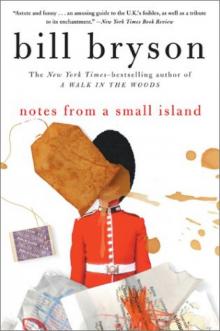 Notes from a Small Island
Notes from a Small Island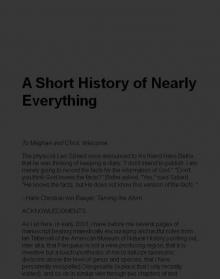 A Short History of Nearly Everything
A Short History of Nearly Everything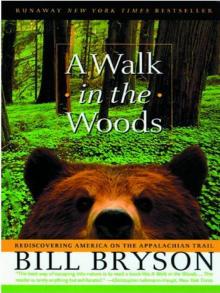 A Walk in the Woods
A Walk in the Woods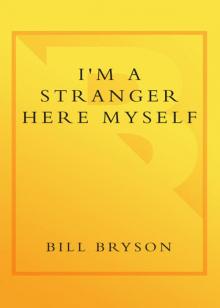 I'm a Stranger Here Myself
I'm a Stranger Here Myself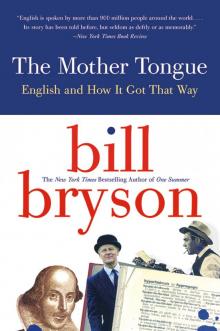 The Mother Tongue
The Mother Tongue Shakespeare
Shakespeare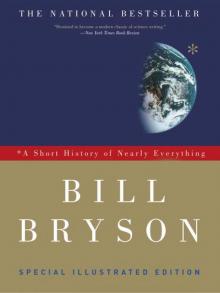 A Short History of Nearly Everything: Special Illustrated Edition
A Short History of Nearly Everything: Special Illustrated Edition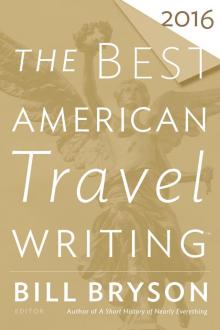 The Best American Travel Writing 2016
The Best American Travel Writing 2016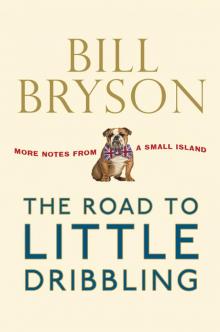 The Road to Little Dribbling
The Road to Little Dribbling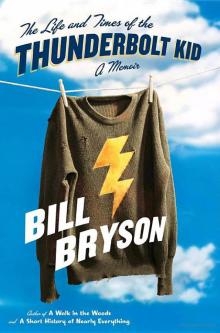 The Life And Times Of The Thunderbolt Kid: A Memoir (v5.0)
The Life And Times Of The Thunderbolt Kid: A Memoir (v5.0)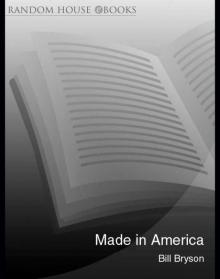 Made In America
Made In America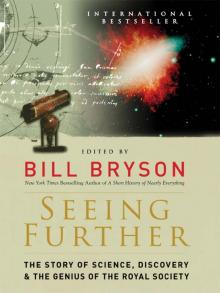 Seeing Further
Seeing Further Shakespeare: The World as Stage
Shakespeare: The World as Stage The Life and Times of the Thunderbolt Kid
The Life and Times of the Thunderbolt Kid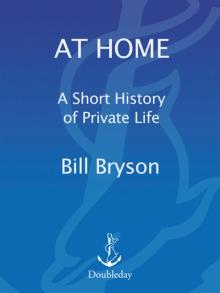 At Home
At Home Bryson's Dictionary For Writers And Editors (v5.0)
Bryson's Dictionary For Writers And Editors (v5.0) Neither Here Nor There
Neither Here Nor There Bill Bryson's African Diary
Bill Bryson's African Diary